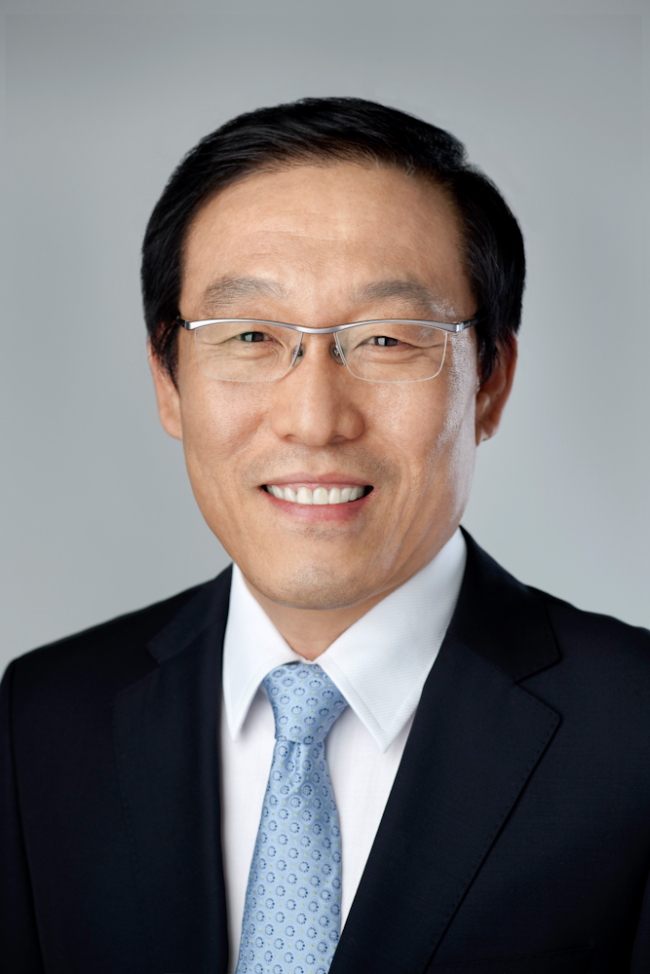Kim Ki-nam, chief executive officer of Samsung Electronics’ semiconductor business, is bracing for fiercer competition in the global market for chips this year -- a critical time for the industry’s growth.
Cautiously forecasting the chip industry for the next 12 months, Kim has said in a short New Year’s message to local media that the industry is in a grave situation, hinting at difficulty in innovating the technologies and concerns about a looming oversupply.
 |
Kim Ki-nam, chief executive officer of Samsung Electronics’ semiconductor business (Samsung Electronics) |
“Amid an unprecedented boom, the semiconductor industry is facing a stark reality,” Kim said. “Due to the rapidly changing technologies, it is very difficult to predict how the industry landscape will change.”
Market researchers project that the global chip market will continue thriving this year, but the growth pace is expected to slow compared to last year.
According to data by IHS Markit, the world DRAM market expanded by a whopping 72 percent to $72.2 billion in 2017 from a year earlier, but is estimated to be $84.4 billion this year, a 16.9 percent growth from last year.

Samsung’s biggest profit source is DRAM.
Predicting tightness in supply and demand of DRAM chips due to rising demand from data center businesses, Samsung is currently expanding its DRAM production by building a new fabrication line on the second floor of the clean room in its newest plant in Pyeongtaek, Gyeonggi Province.
The new facility’s capacity is expected to be 60,000 wafers, about a sixth of the company’s total DRAM production capacity, according to the industry.
When the expansion plan was released in November, DRAM prices temporarily nosedived 21.4 percent in one week, due to oversupply worries.
“We will make ceaseless efforts to innovate technologies and take challenges in order to keep the world’s top chipmaker position,” Kim said.
Samsung plans to seek innovation for its flagship 3-D NAND flash memory by allocating 60 percent of its annual investment amount for NAND, according to the company’s conference call on its third quarter earnings.
However, the NAND market is also predicted to have a slower growth this year. The market grew 46.2 percent to $53.8 billion last year, while it is forecast to expand 10 percent to $59.2 billion this year.
 |
Samsung Electronics‘ semiconductor factory in Pyeongtaek, Gyeonggi Province (Samsung Electronics) |
Industry observers say Samsung’s investment plan for this year might reshape the market by affecting the supply and demand significantly.
“The NAND market already started slowing down, while the DRAM market is likely to be influenced by Samsung’s further investment,” said Song Myung-seob, analyst at HI Investment & Securities in a report. “Investors will need to pay more attention to the company’s upcoming investment announcement for this year.”
According to another market researcher IC Insights, Samsung invested a total of $26 billion last year, accounting for over 20 percent of the total investments by global chipmakers.
The institute estimated Samsung spent $14 billion on building facilities for 3-D NAND, while investing $7 billion and $5 billion in DRAM and foundry each.
By Song Su-hyun (
song@heraldcorp.com)










![[Today’s K-pop] Blackpink’s Jennie, Lisa invited to Coachella as solo acts](http://res.heraldm.com/phpwas/restmb_idxmake.php?idx=644&simg=/content/image/2024/11/21/20241121050099_0.jpg)